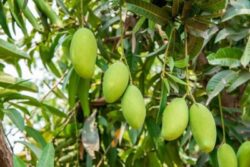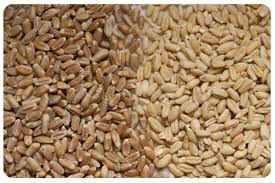Is Mango a Melon? No, And Here’s Why
what is A Mango?
Mango is a juicy, tropical fruit that grows on trees belonging to the Mangifera genus. It is native to South Asia but is now cultivated in many countries with tropical climates, including India, Thailand, Mexico, and Brazil. Mangoes are a rich source of vitamins, minerals, and antioxidants, and they have a sweet and tangy flavor with a creamy, juicy texture. Mangoes can be eaten raw or used in a variety of dishes, including smoothies, salads, and desserts. There are many varieties of mangoes, each with its own unique flavor, texture, and appearance
Reasons Why Mango is Not a Melon
Mango and melon are both delicious and refreshing fruits, but they are not the same. In this explanation, we will explore the key differences between mango and melon under the following subheadings:
- Appearance
- Taste and Texture
- Nutritional Content
- Botanical Classification
Also Read : what Is the National Fruit of Ukraine?
- Appearance: Mango and melon have distinct differences in their appearance. Mango is a tropical fruit that is oval-shaped and varies in size depending on the variety. It has a rough, bumpy skin that ranges in color from green to yellow to red. The flesh of a mango is a deep orange color and has a large, flat seed in the center.
On the other hand, melon is a round or oval-shaped fruit with a smooth, netted skin. It comes in different varieties such as cantaloupe, honeydew, and watermelon. The flesh of a melon is usually white, yellow, or green and has many small seeds in the center.
- Taste and Texture: Mango and melon have different taste and texture profiles. Mango has a sweet and tangy flavor with a creamy, juicy texture. It has a fibrous texture and is often eaten raw or used in desserts, smoothies, or salads.
Melon, on the other hand, has a mild, sweet flavor with a juicy, crisp texture. It is often eaten raw as a refreshing snack or used in fruit salads, smoothies, or as a garnish.
- Nutritional Content: Mango and melon have different nutritional content. Mango is high in vitamin C, vitamin A, and fiber. It also contains potassium, magnesium, and folate. Melon is also high in vitamin C, vitamin A, and fiber. It also contains potassium, calcium, and folate.
- Botanical Classification: Mango and melon belong to different families of fruits. Mango belongs to the Anacardiaceae family, which includes other fruits such as cashews and pistachios. Melon, on the other hand, belongs to the Cucurbitaceae family, which includes other fruits such as cucumber and squash
What is Mango Melon
As far as I am aware, there is no such fruit as a “mango melon.” Mango and melon are two different types of fruit with distinct characteristics, flavors, and appearances.
Mango is a sweet and juicy tropical fruit that is native to South Asia but is now widely cultivated in many tropical and subtropical regions around the world. It has a distinctive sweet and slightly tangy flavor and a fleshy, fibrous texture. The fruit is typically oval-shaped and ranges in color from green to yellow to red, depending on its level of ripeness.
Melon, on the other hand, is a large fruit with a sweet and juicy flesh that is typically eaten raw. There are many different types of melon, including watermelon, cantaloupe, honeydew, and muskmelon. Each variety has a distinct flavor and appearance, but all melons are generally round or oval-shaped with a hard, textured rind and a soft, sweet interior.
It’s possible that someone may have combined the two fruits in a recipe or named a hybrid fruit as a “mango melon,” but as far as I know, it is not a commonly recognized type of fruit
Also Read: What Is the National Fruit Of Spain? All you should know
Reasons Why Mango Are Confused for Melon
Mangoes and melons are two distinct types of fruit, but there may be some reasons why people could confuse them. Here are a few possibilities:
- Similar shapes: Depending on the variety, both mangoes and melons can be roughly oval-shaped, which could lead to confusion, especially if the fruits are not fully ripe and their distinctive colors are not yet visible.
- Texture: Both mangoes and melons have a soft, juicy flesh that can be similar in texture, which could lead to confusion when eating them.
- Color: Some varieties of mangoes and melons have similar colors. For example, some ripe mangoes may be yellow or orange in color, which could be confused with a ripe cantaloupe or honeydew melon.
- Language differences: Depending on the language and region, the names for fruits can vary and be similar sounding. For example, in some Spanish-speaking countries, the word for mango is “mango” while the word for cantaloupe is “melón.” This could lead to confusion if a person is not familiar with the local language.
However, it’s important to note that despite these similarities, mangoes and melons are still fundamentally different types of fruit with distinct flavors, textures, and characteristics
Final Thoughts
Understanding the mango household is important to those who want a mix of fruit families in their meals, plan a fruit nourishment, or simply for academic reasons.
No matter your intention for looking this up, I’m sure you must have establish what you were looking for.


